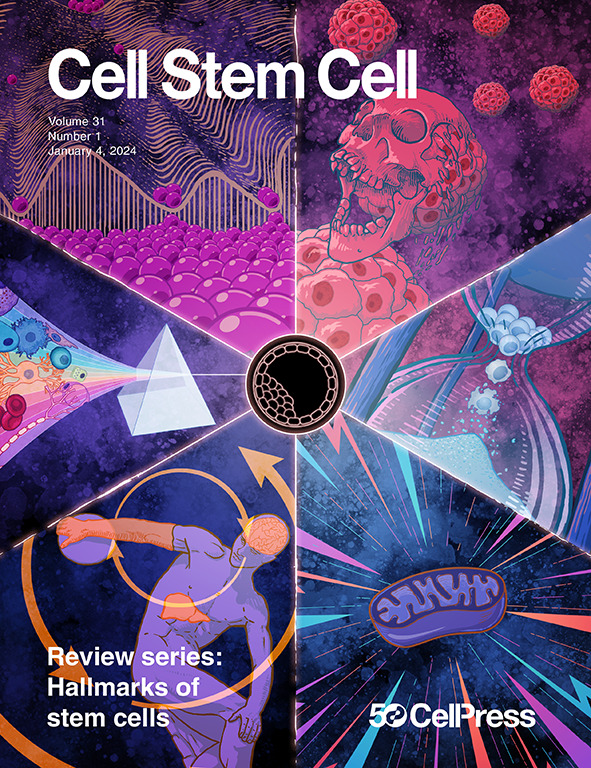人类干细胞衍生的A10多巴胺能神经元特异性地整合到小鼠电路中并改善抑郁样行为
IF 20.4
1区 医学
Q1 CELL & TISSUE ENGINEERING
引用次数: 0
摘要
A10多巴胺能神经元位于腹侧被盖区,在奖励相关和目标导向行为中发挥核心作用,被认为是治疗包括抑郁症在内的各种精神疾病的靶细胞。在这里,我们报道了一种从人多能干细胞(hPSCs)中产生A10样中脑多巴胺能(mDA)神经元的有效分化方法,并发现Notch抑制剂、胶质细胞系衍生的神经营养因子(GDNF)和抗坏血酸(AA)诱导A10亚型的分化。这些hpsc衍生的mDA神经元表现出A10亚型的特征,包括基因表达谱和电生理特性。此外,移植的a10样mDA神经元特异性地投射到其内源性靶脑区域,并诱导正常小鼠的焦虑表型或抑郁模型小鼠的抗抑郁样表型。这些结果表明,移植的a10样mDA神经元可以重建特定的神经回路,并在功能上恢复受损的神经回路,突出了hpsc来源的神经元亚型在神经精神疾病治疗中的应用前景。本文章由计算机程序翻译,如有差异,请以英文原文为准。

Human stem cell-derived A10 dopaminergic neurons specifically integrate into mouse circuits and improve depression-like behaviors
A10 dopaminergic neurons located in the ventral tegmental area play central roles in reward-related and goal-directed behaviors and are proposed to be target cells for treatment of various psychiatric disorders, including depression. Here, we report an efficient differentiation method to generate A10-like midbrain dopaminergic (mDA) neurons from human pluripotent stem cells (hPSCs) and found that post-mitotic patterning by Notch inhibitor, glial cell line-derived neurotrophic factor (GDNF), and ascorbic acid (AA) induced A10 subtype specification. These hPSC-derived mDA neurons exhibited characteristics of the A10 subtype, including gene expression profiles and electrophysiological properties. Moreover, grafted A10-like mDA neurons specifically project to their endogenous target brain regions and induce the anxiolytic phenotype in normal mice or antidepressant-like phenotypes in depression model mice. These results indicate that grafted A10-like mDA neurons can reconstruct specific circuits and functionally restore impaired circuits, highlighting the promising application of hPSC-derived neuron subtypes in the treatment of neuropsychiatric disorders.
求助全文
通过发布文献求助,成功后即可免费获取论文全文。
去求助
来源期刊

Cell stem cell
生物-细胞生物学
CiteScore
37.10
自引率
2.50%
发文量
151
审稿时长
42 days
期刊介绍:
Cell Stem Cell is a comprehensive journal covering the entire spectrum of stem cell biology. It encompasses various topics, including embryonic stem cells, pluripotency, germline stem cells, tissue-specific stem cells, differentiation, epigenetics, genomics, cancer stem cells, stem cell niches, disease models, nuclear transfer technology, bioengineering, drug discovery, in vivo imaging, therapeutic applications, regenerative medicine, clinical insights, research policies, ethical considerations, and technical innovations. The journal welcomes studies from any model system providing insights into stem cell biology, with a focus on human stem cells. It publishes research reports of significant importance, along with review and analysis articles covering diverse aspects of stem cell research.
 求助内容:
求助内容: 应助结果提醒方式:
应助结果提醒方式:


